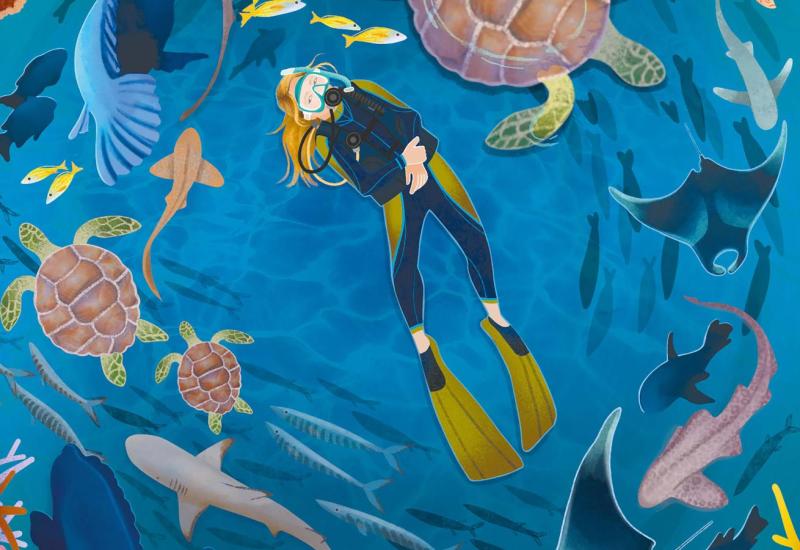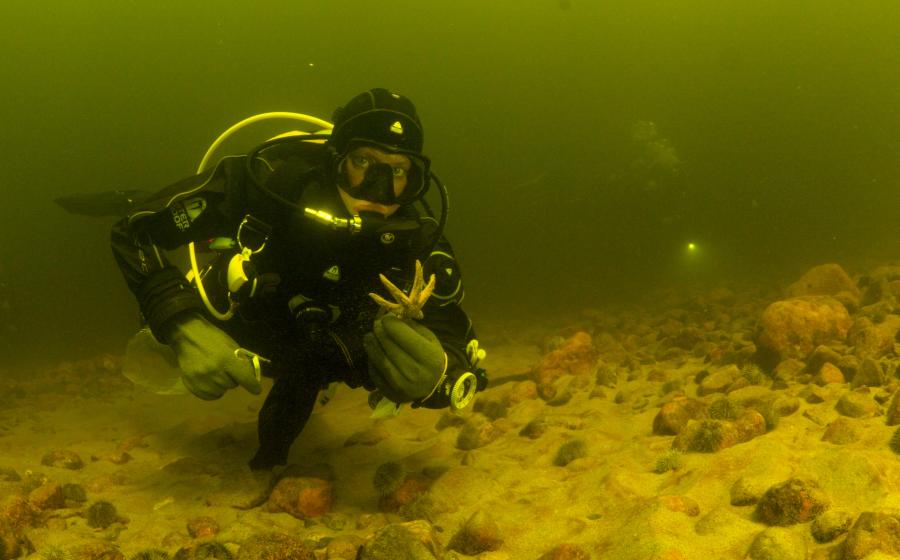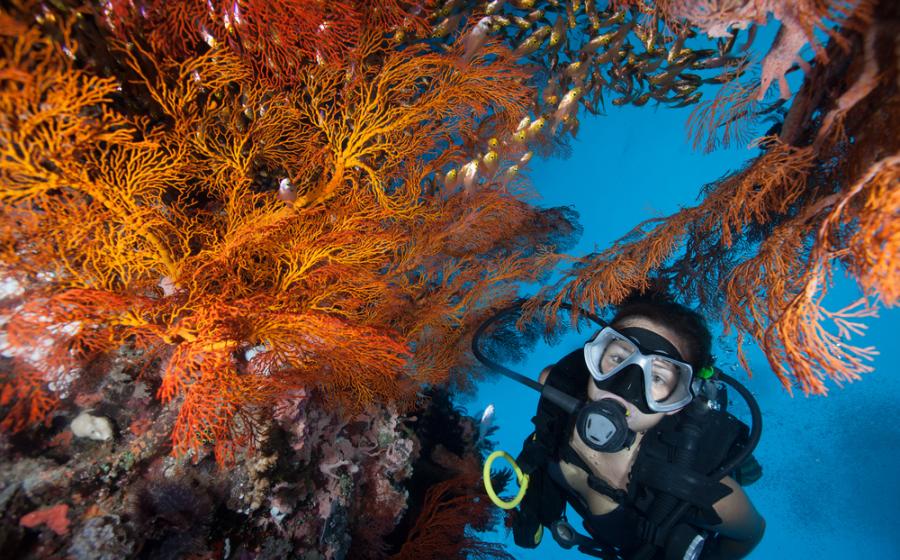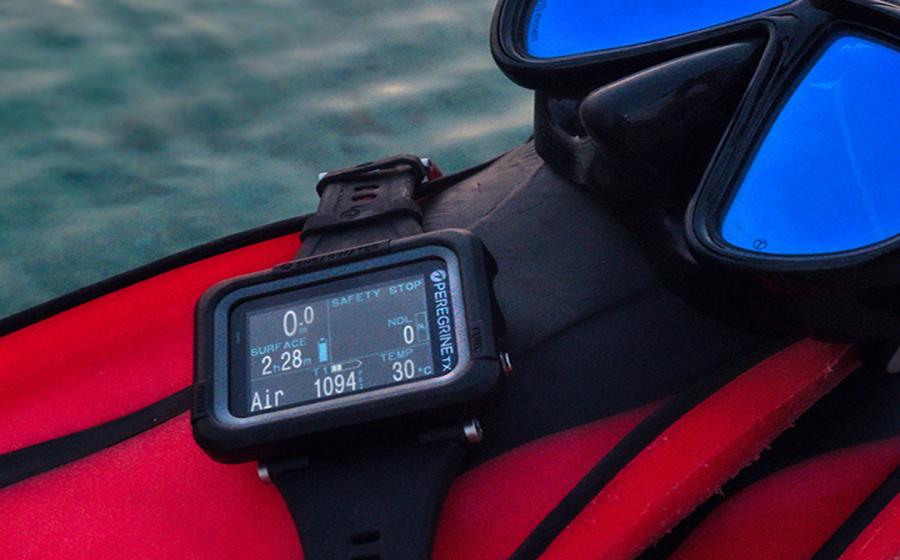Diving Fiji, the Soft Coral Capital of the World
Imagine a wildly colorful reef garden – pink, purple, yellow, red, green, blue – and then imagine it all moving. Swaying in a liquid breeze. Pulsing with life.
This is Fiji – often cited as “soft coral capital” of the diving world – and with good reason. Many areas of Fiji feature beautiful reefs with large swathes that are totally encrusted with soft corals, which are shrub-like organisms that puff up in the current and appear in a rainbow of vivid colors.
Although they look like plants, soft corals (like their hard coral cousins) are actually animals. To be more specific, soft corals are critters without spines (invertebrates). They feature a large number of polyps, with which they feed. The polyps each have eight tentacles, hence the classification of Octorcorallia – a class that includes Gorgonians, Sea Fans and Sea Pens as well.
Add to the colorful, gorgeous soft-coral-encrusted reefs of Fiji constellations of fusiliers, schools of barracuda, jacks and triggerfish, an occasionally sauntering shark, and top it all off with mesmerizing clouds of pulsating bright orange and pink anthias and what results is jaw-dropping beauty, everywhere you look.
All of the images in this photo gallery were captured in the Vatu-i-Ra waters of Fiji – the wide passage between the large south island of Viti Levu (where the international airport at Nadi is located) and the large north island of Vanua Levu.
I have had the good fortune to dive this area several times in the past decade, returning after first venturing to this part of Fiji in the early 1980s as a twenty-something footloose backpacker – long before I ever even dreamt of becoming a diver. Back then, I had no idea of what stunning beauty flourished below the surface. In fact, back then, being of the Jaws generation, I was so frightened of sharks that I never even ventured into the azure waters for a swim! It is funny how time changes everything – these days I am thrilled to see a shark, any shark, and as a photographer, I often try to sneak in tight for a close-up.
Some of the images in this gallery were taken while on the N’aia live aboard (a wonderful operation), with the balance taken from land-based ops at Wananavu Beach Resort (near Raki Raki), via their new and outstanding on-site dive operation – Dive Wananavu. Dive Wananavu is able to get their divers out to some of the most pristine and exciting sites in the Vatu-i-Ra waters (conditions permitting), including E6 and the epically beautiful Mount Mutiny – previously only reachable by live aboards. On less benign days, when big crossings are not possible, or for less experienced divers who are not comfortable in current, there is plenty of good diving close to the resort on Sailstone Reef to keep folks happy.
The Vatu-i-Ra Passage features fringing, ridge and bommie coral formations. As such, there is quite a lot of steep terrain, especially on the bommies – which are vertical coral pillars that rise up from the seafloor, much like underwater skyscrapers. In the ridges and fringing reef systems there are several beautiful swim-throughs and small caverns, as well as lovely, healthy hard and soft coral gardens.
Typically, the soft corals will be on the “current” side of any formation, as they feed on drifting zooplankton and small fry, delivered to them by the current, which they sting with the tentacles on their polyps, and then ingest. To see these soft coral gardens fully puffed up and blooming, with the anthias out en masse and swarming, it's best to dive these areas in current conditions. The good news is that on any bommie in this part of Fiji, there will always be a current side, and a lee side (out of the current – usually where the hard coral gardens flourish). So divers can be dropped in out of the current, and then can decide how much they want to handle as they round the corner. I’ve done some beautiful, mellow current dives that allowed me to spiral up around a bommie on many leisurely circuits, and I’ve done a couple of hairy ones where I was lucky to make it around the corner once.
Looking for the big picture? Love colorful and lively reefs? Looking for something a little easier to get to than, say, Indonesia? Looking for legendary hospitality and unspoiled vistas? Fiji answers all these criteria, and non-stop flights from Los Angeles (overnight both ways on Fiji Airways) and Honolulu make it pretty painless to get there.
Judy is an avid underwater photographer and traveller whose work has appeared in several dive publications. Judy also shares a comprehensive dive travel and photo blog.
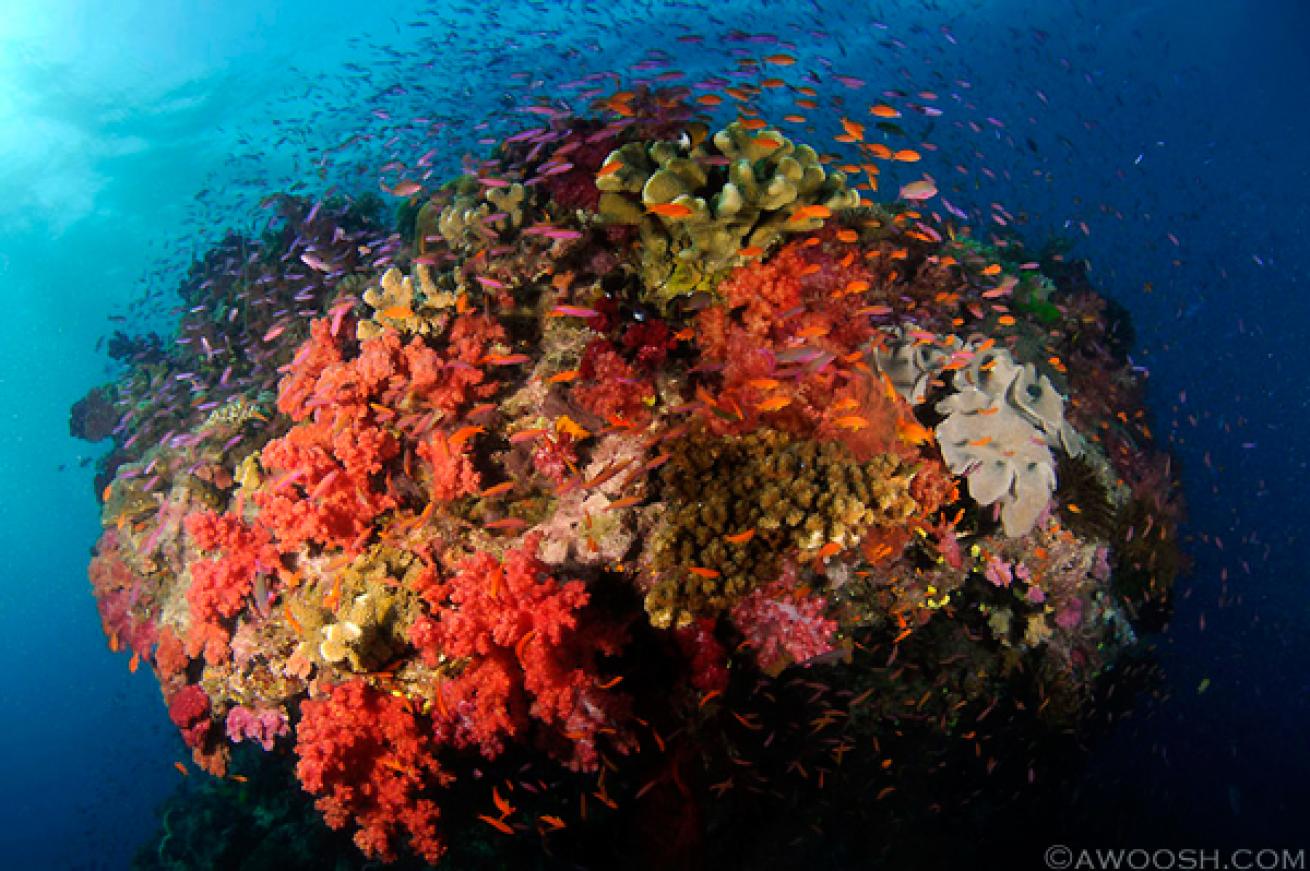
Judy GTop of a bommie encrusted with soft corals and surrounded by clouds of anthias in Fiji.
Imagine a wildly colorful reef garden – pink, purple, yellow, red, green, blue – and then imagine it all moving. Swaying in a liquid breeze. Pulsing with life.
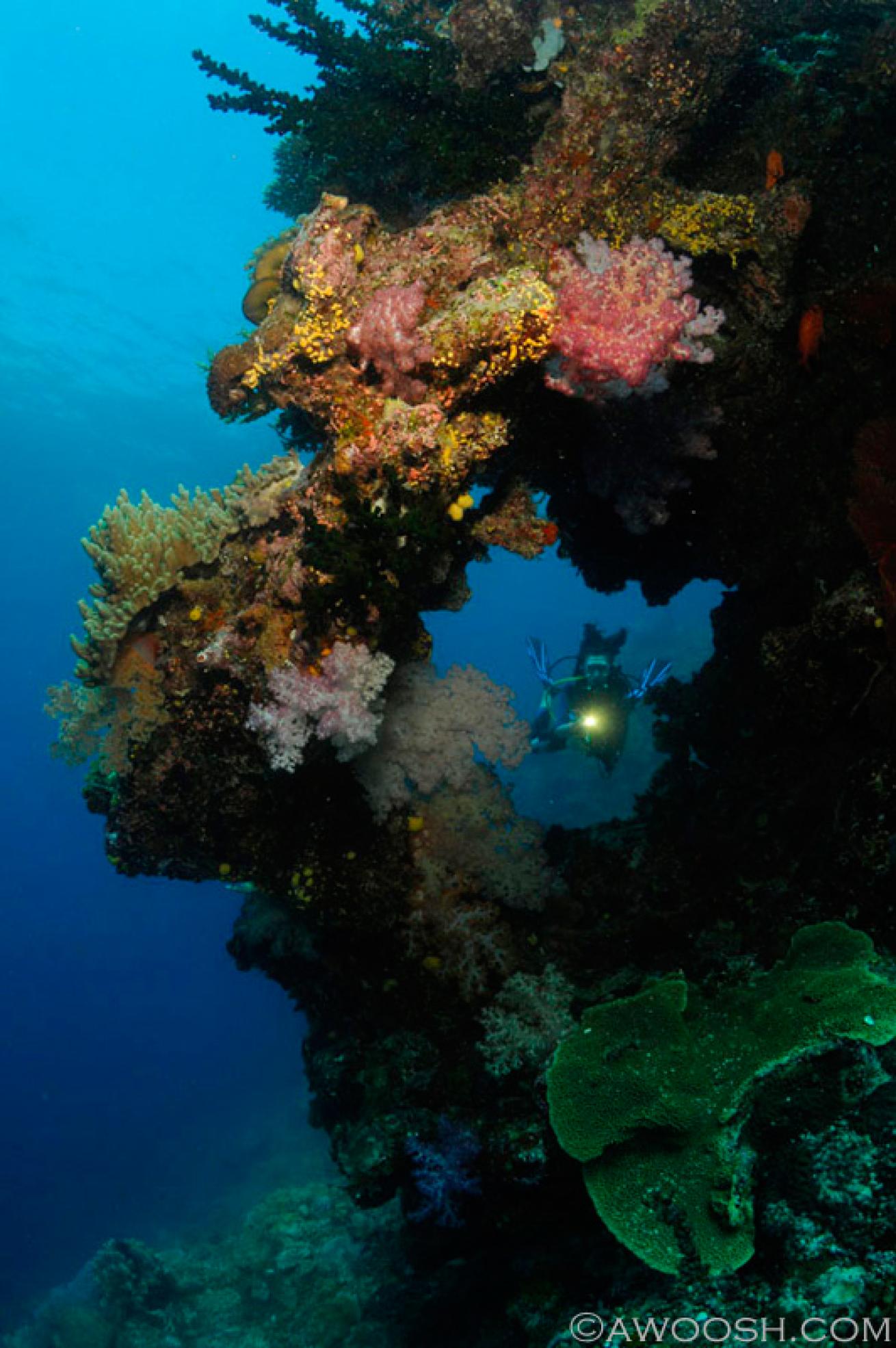
Judy GA hole in the wall at E6. The huge pinnacle is one of Fiji's best-known dive sites.
This is Fiji – often cited as “soft coral capital” of the diving world – and with good reason. Many areas of Fiji feature beautiful reefs with large swathes that are totally encrusted with soft corals, which are shrub-like organisms that puff up in the current and appear in a rainbow of vivid colors.
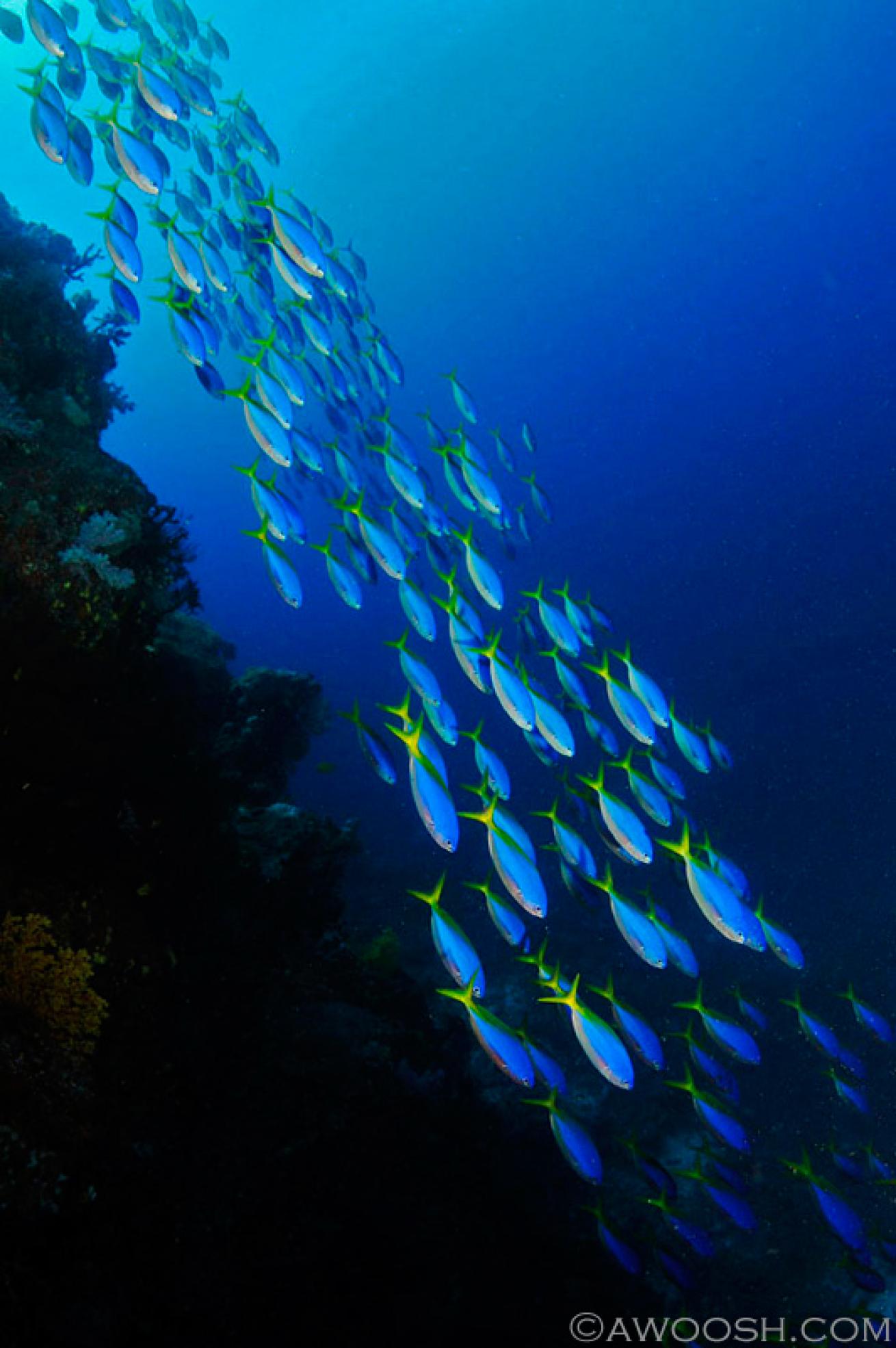
Judy GConstellations of fusiliers dot the soft-coral-encrusted reefs of Fiji.
Although they look like plants, soft corals (like their hard coral cousins) are actually animals. To be more specific, soft corals are critters without spines (invertebrates). They feature a large number of polyps, with which they feed. The polyps each have eight tentacles, hence the classification of Octorcorallia – a class that includes Gorgonians, Sea Fans and Sea Pens as well.
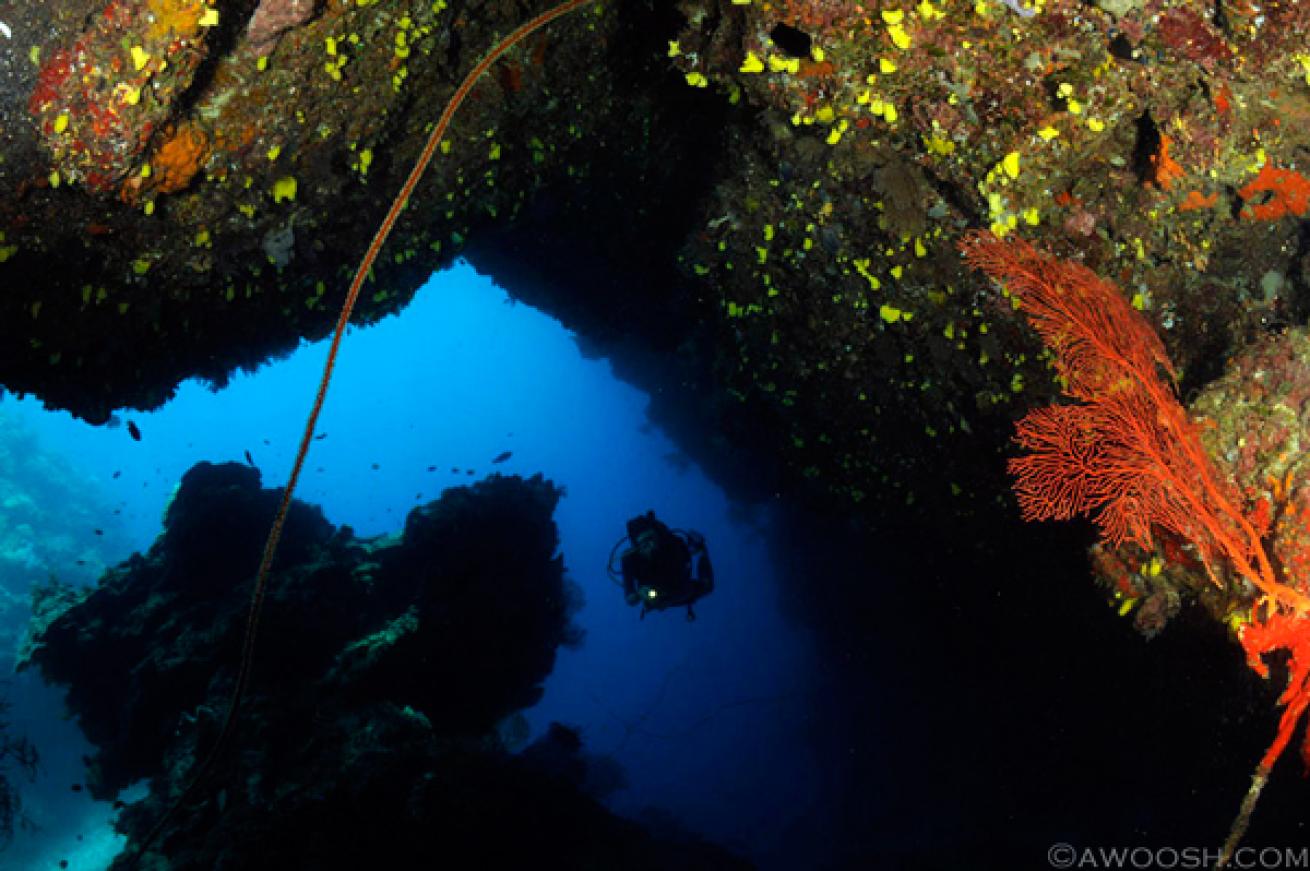
Judy GA swim-through found at a cavern at Fiji's E6 dive site.
Add to the colorful, gorgeous soft-coral-encrusted reefs of Fiji constellations of fusiliers, schools of barracuda, jacks and triggerfish, an occasionally sauntering shark, and top it all off with mesmerizing clouds of pulsating bright orange and pink anthias and what results is jaw-dropping beauty, everywhere you look.
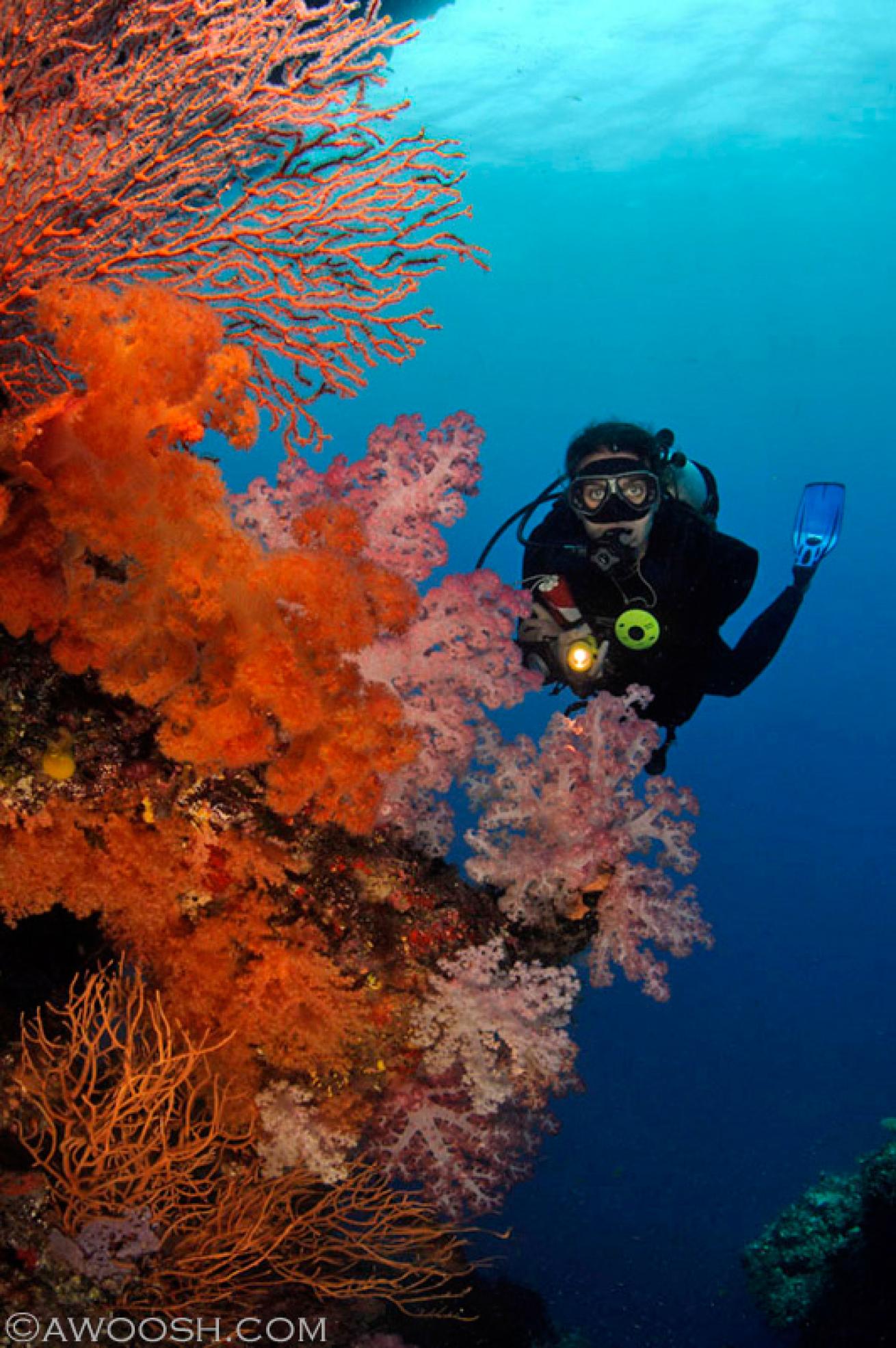
Judy GSoft-coral gardens are the main attraction on Fiji's reefs.
All of the images in this photo gallery were captured in the Vatu-i-Ra waters of Fiji – the wide passage between the large south island of Viti Levu (where the international airport at Nadi is located) and the large north island of Vanua Levu.
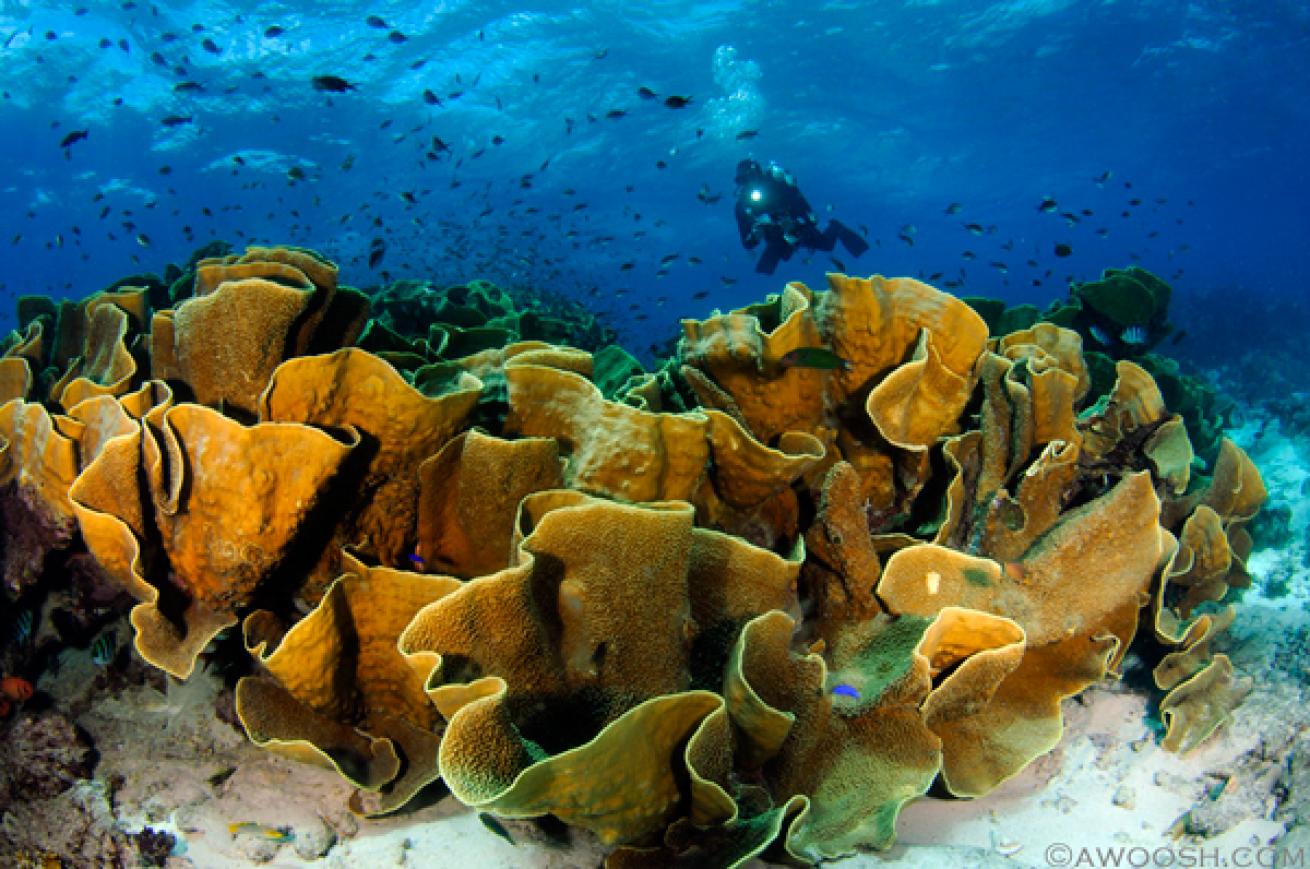
Judy GAn enormous stand of cabbage coral in Fiji. These corals are likely to be found in mid-depth quiet waters.
I have had the good fortune to dive this area several times in the past decade, returning after first venturing to this part of Fiji in the early 1980s as a twenty-something footloose backpacker – long before I ever even dreamt of becoming a diver. Back then, I had no idea of what stunning beauty flourished below the surface. In fact, back then, being of the Jaws generation, I was so frightened of sharks that I never even ventured into the azure waters for a swim! It is funny how time changes everything – these days I am thrilled to see a shark, any shark, and as a photographer, I often try to sneak in tight for a close-up.
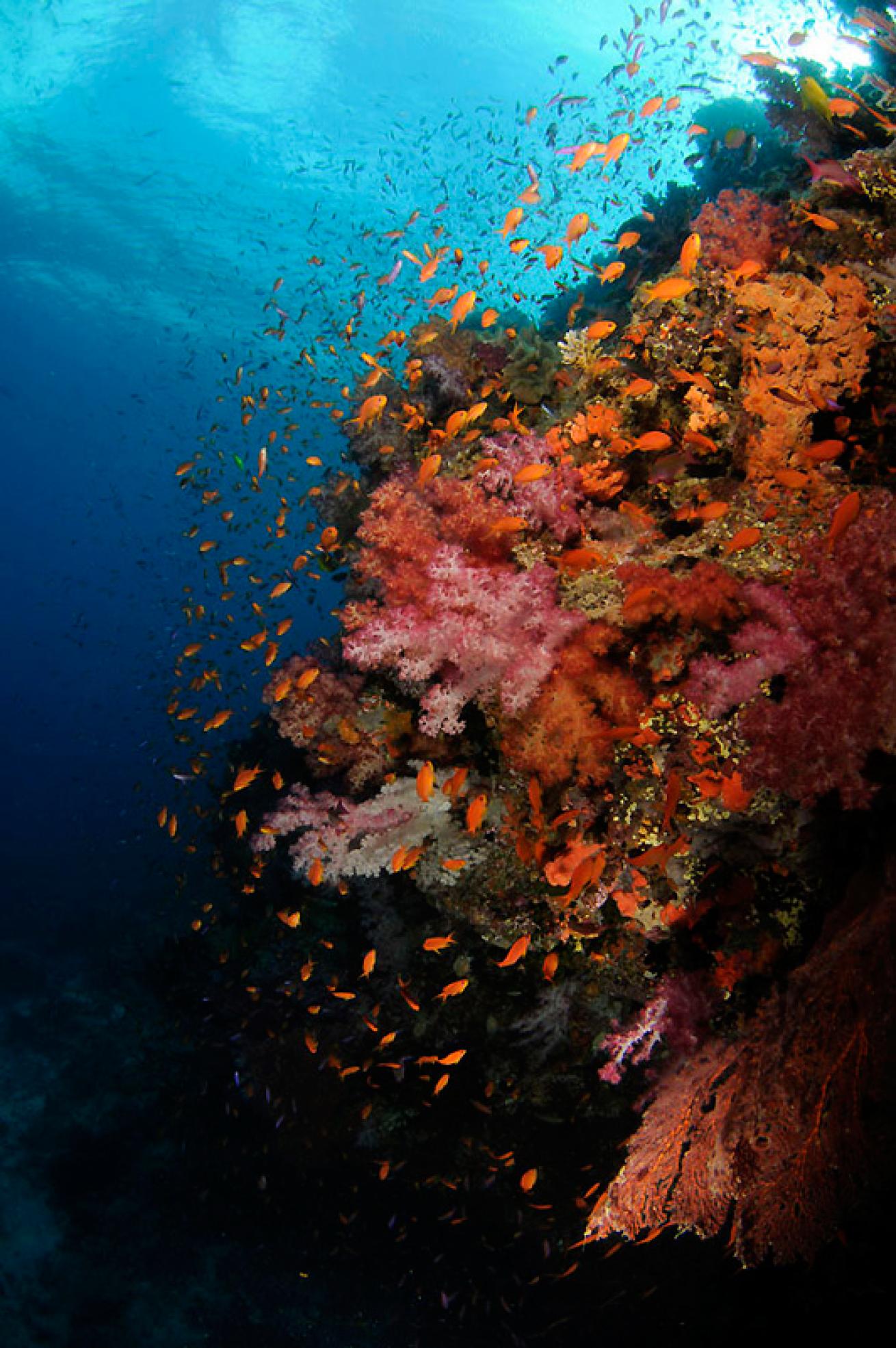
Judy GOne of the many reef scenes found in the "Soft Coral Capital of the World."
Some of the images in this gallery were taken while on the N’aia live aboard (a wonderful operation), with the balance taken from land-based ops at Wananavu Beach Resort (near Raki Raki), via their new and outstanding on-site dive operation – Dive Wananavu. Dive Wananavu is able to get their divers out to some of the most pristine and exciting sites in the Vatu-i-Ra waters (conditions permitting), including E6 and the epically beautiful Mount Mutiny – previously only reachable by live aboards. On less benign days, when big crossings are not possible, or for less experienced divers who are not comfortable in current, there is plenty of good diving close to the resort on Sailstone Reef to keep folks happy.
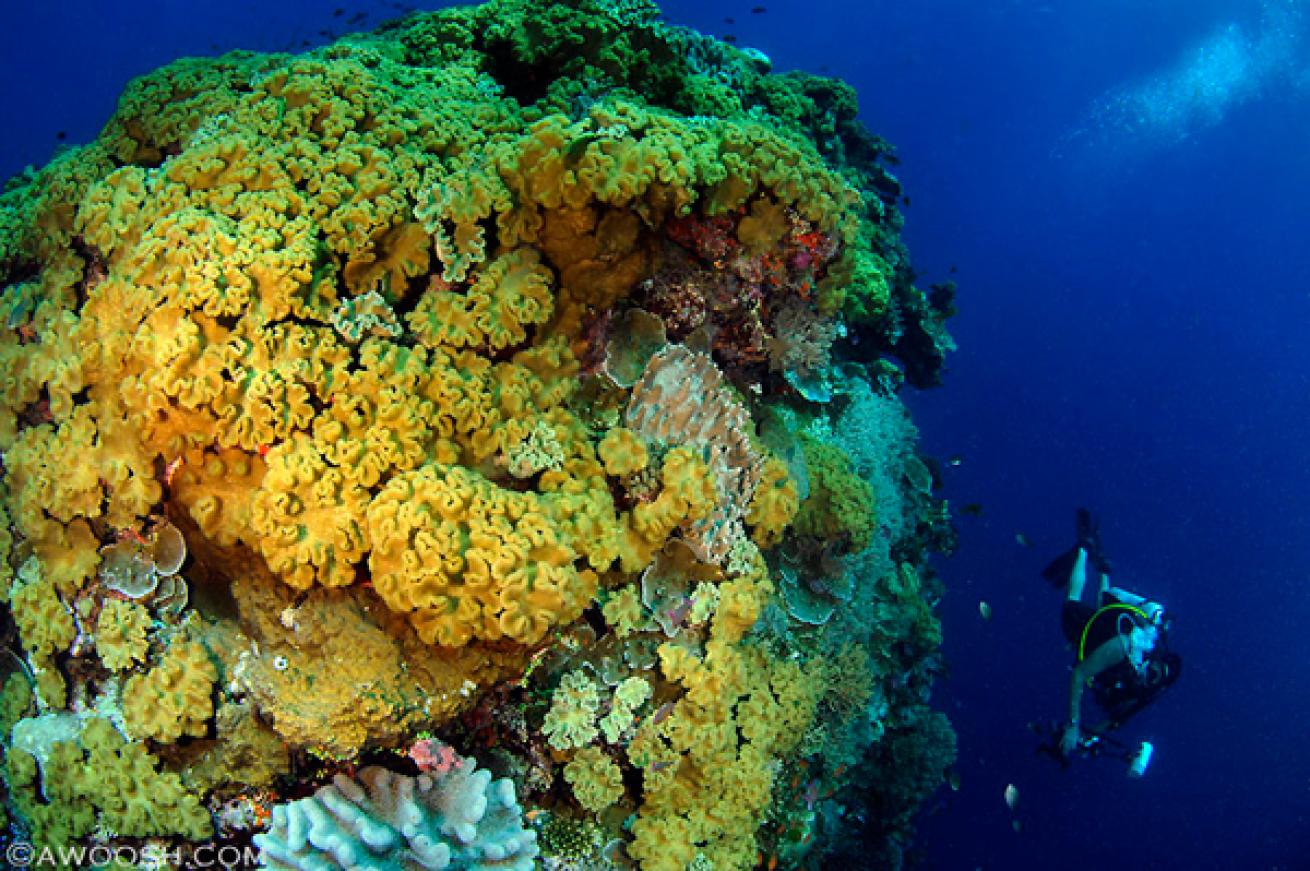
Judy GYellow leather corals encrust the Instant Replay dive site in Fiji. Swim along a sloping wall before swinging around its point towards the back of the reef. You then reach a canyon that cuts through the reef, which you follow along before arriving back at the front of the reef.
The Vatu-i-Ra Passage features fringing, ridge and bommie coral formations. As such, there is quite a lot of steep terrain, especially on the bommies – which are vertical coral pillars that rise up from the seafloor, much like underwater skyscrapers. In the ridges and fringing reef systems there are several beautiful swim-throughs and small caverns, as well as lovely, healthy hard and soft coral gardens.
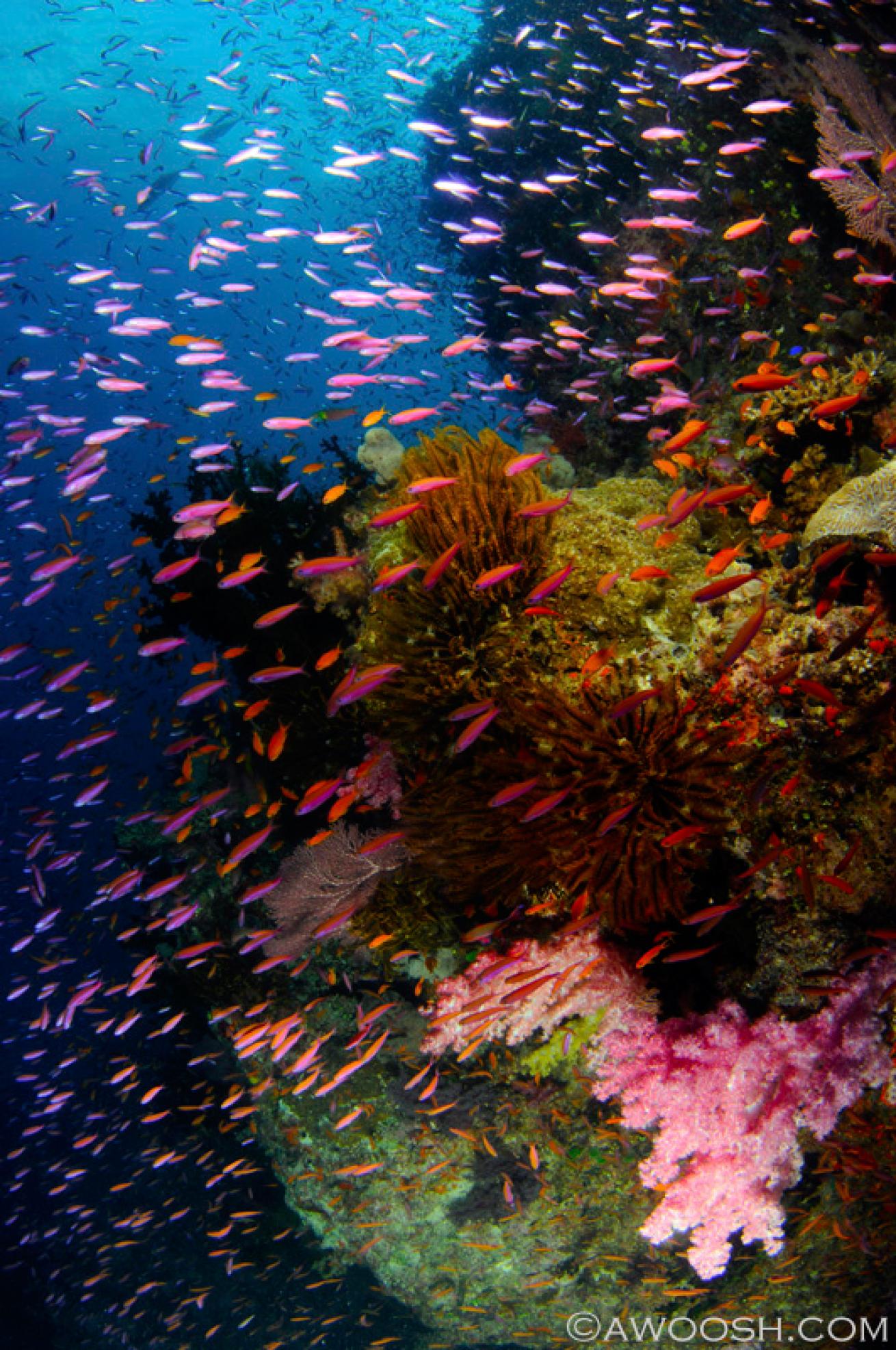
Judy GAnthias swarm the reefs in Fiji. These zooplankton feeders are found in all tropical oceans and seas of the world.
Typically, the soft corals will be on the “current” side of any formation, as they feed on drifting zooplankton and small fry, delivered to them by the current, which they sting with the tentacles on their polyps, and then ingest. To see these soft coral gardens fully puffed up and blooming, with the anthias out en masse and swarming, it's best to dive these areas in current conditions. The good news is that on any bommie in this part of Fiji, there will always be a current side, and a lee side (out of the current – usually where the hard coral gardens flourish). So divers can be dropped in out of the current, and then can decide how much they want to handle as they round the corner. I’ve done some beautiful, mellow current dives that allowed me to spiral up around a bommie on many leisurely circuits, and I’ve done a couple of hairy ones where I was lucky to make it around the corner once.
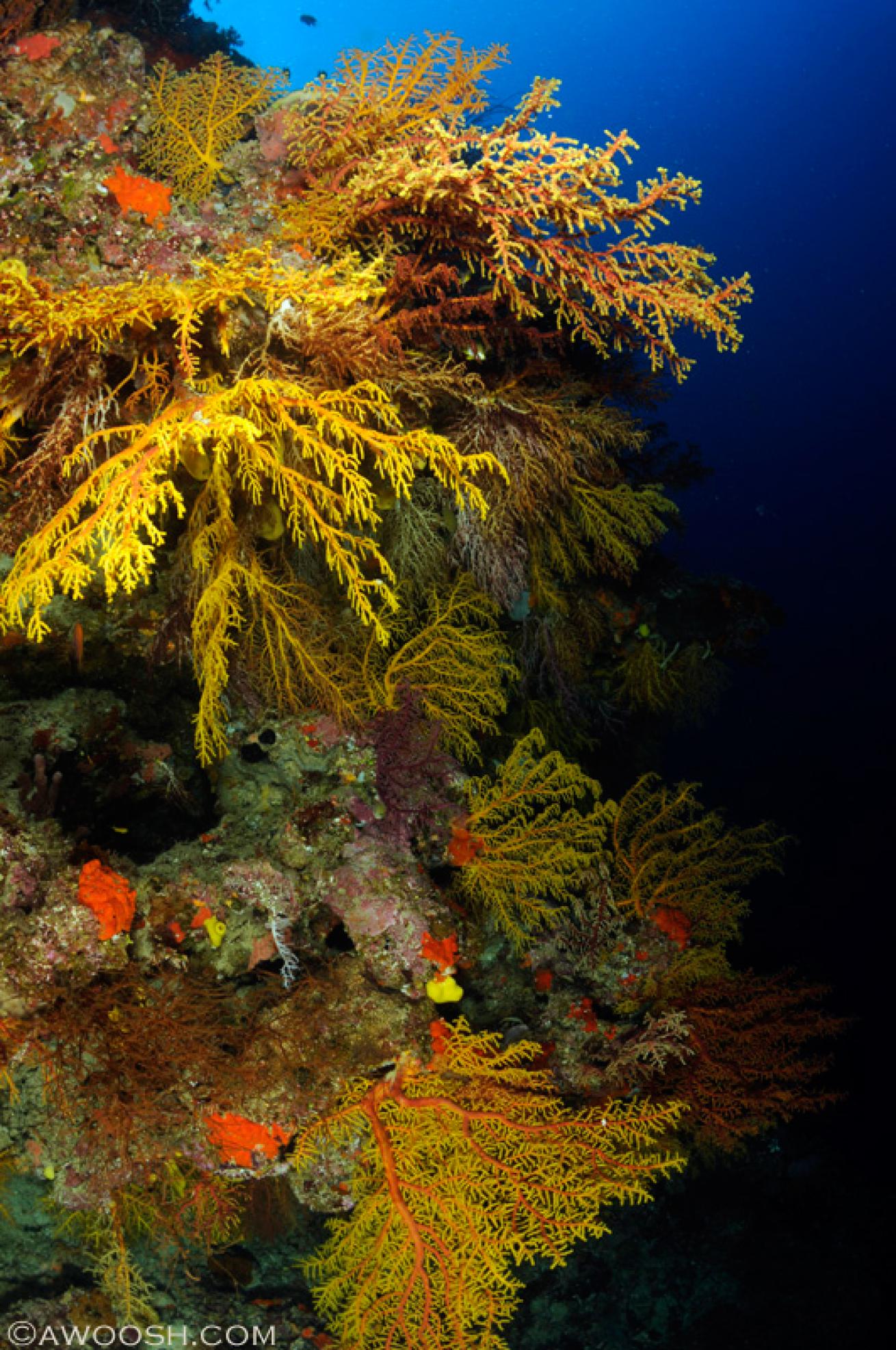
Judy GMount Mutiny's walls in Bligh Water boast a rainbow of colorful soft corals.
Looking for the big picture? Love colorful and lively reefs? Looking for something a little easier to get to than, say, Indonesia? Looking for legendary hospitality and unspoiled vistas? Fiji answers all these criteria, and non-stop flights from Los Angeles (overnight both ways on Fiji Airways) and Honolulu make it pretty painless to get there.
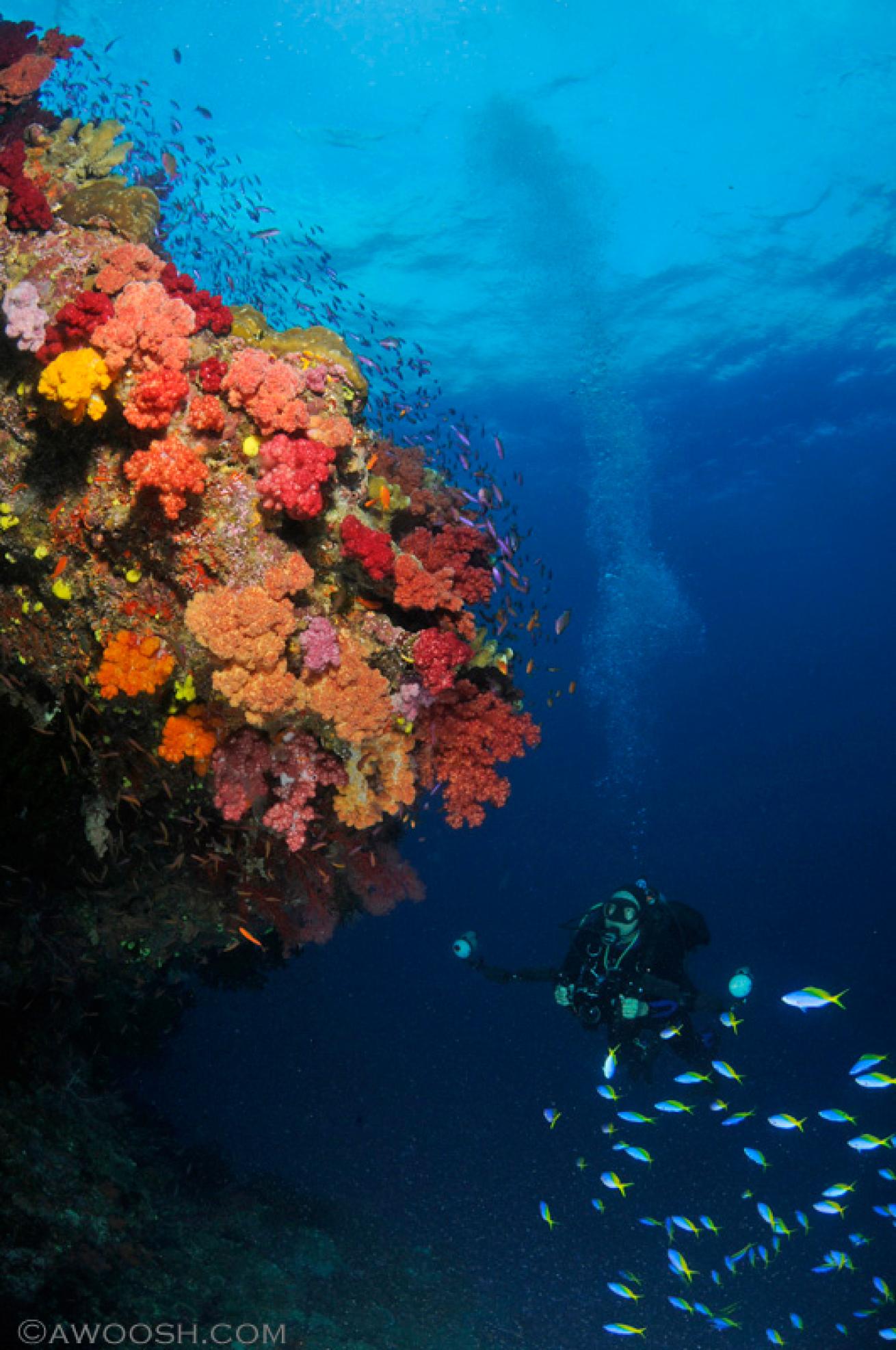
Judy GMany areas of Fiji feature beautiful reefs encrusted with a rainbow of soft corals.
Judy is an avid underwater photographer and traveller whose work has appeared in several dive publications. Judy also shares a comprehensive dive travel and photo blog.



